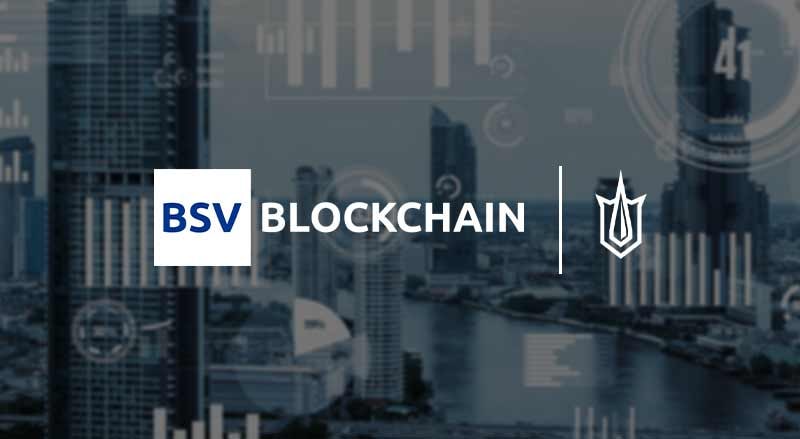Blockchain is more than just a tool for companies as it can fundamentally change how enterprises across the globe can do business. Speaking at the recent Blockchain in Business Conference in Sydney, Brendan Lee, Co-Founder and CEO of Elas, showcased the utility of the BSV blockchain for businesses and the services his company has to offer.
Speaking to an audience that has development expertise, Lee talked about the very basics of BSV blockchain transactions, in order to later discuss application and utility for businesses. He explains that the blockchain is a ledger, where transactions are created peer-to-peer and validated by nodes.
Once transactions are finalised by users, they are recorded into the blockchain, along with a timestamp of when the block was published. Blocks carry a reward and form a graph database, with edges formed in each transaction. This methodology of passing tokens from transaction to transaction gives the ledger its utility, and emulates traditional cash transactions.
The BSV blockchain – a versatile protocol
Lee noted that the BSV blockchain is very versatile. Any type of data can be put into a transaction or a spendable output within that transaction. The script determines whether the data is spendable and can be used to put permanent data in it.
Additionally, a payment channel can be created, which is a non-final transaction that can be used as a mechanism to exchange data between parties. This channel allows for the exchange of data and money within a single piece of cash, and only the last transaction is added to the blockchain. This method is used to minimise the amount of data that is added to the blockchain.
Explaining the Metanet and its utility
Lee then explained the concept of the Metanet protocol, which is a secure protocol invented by Dr Craig S. Wright, aka Satoshi Nakamoto. This protocol is a second order graph on top of the base layer protocol. Essentially, this means creating a completely different database that is fully encapsulated within the layer zero blockchain ledger.
The protocol allows users to create a second order structure without ever having to leave the network, making it completely valid within BSV. With it, users can put almost anything they like inside a transaction output, which creates a packet of data that has a pointer back to the parent and a signature of a public key that is in the parent.
Private ledgers on top of BSV’s public ledger
Lee highlighted the potential for using blockchain technology to transform the way business services operate. This technique allows for the creation of private ledgers on top of the public blockchain ledger, providing complete control over who does what, where, who issues what and when.
This allows businesses to create a parent-child structure, where the parent might be the board of directors and the child might be a department within that business. Within that department, the people who operate it are the permissioned layer, and a specified number of them need to sign off on any operations that happen underneath that second order node.
The first order layer of the blockchain adheres strictly to the BSV protocol, while the second order layer provides opportunities for using any type or quantity of data, including content, social media, legacy databases, and even complete web pages. The second layer can then be created with completely new permissions. This technology provides immense potential for businesses to create innovative systems for their operations.
Building applications with high-level security and privacy
To showcase the utility of BSV and Elas in practice, Brendan Lee refers to a current government project Elas is working on in the Philippines. The proposed model involves creating a node that represents the government in a region, with separate nodes for each of its branches.
This model is a novel way to distribute content on the internet, which currently relies on the client-server model. By creating their own Metanet nodes, service providers can gather information from different people and have ownership of that information, with third-party blockchain ledger access providers used to access the information. This model makes it more difficult to attack any single entity as the system only provides minimal information to each end, with the bulk of the information stored on the blockchain.
Lee further explains how blockchain can be used to distribute content on the internet while keeping private information encrypted, while also addressing security and scalability issues. He also discusses the advantages of using a permissioned blockchain system with multi-signature capabilities and transferable tokens for enterprise record-keeping.
Business apps built by Elas
Finally, Lee presented some of the existing applications that Elas offers or is working on. One of them is Amleh, a gold bullion storage system where vaults issue tokens representing the stored bullion. Amleh can issue a cash-like currency against these tokens, creating a gold-backed currency or tradable tokens.
Manufact is designed to track luxury goods using techniques like RFID scanning throughout the supply chain. Manufacturers can use it to monitor their facilities and producer locations to see what’s being put into the system, track the goods’ movement, and understand when they are consumed. The focus is on providing comprehensive tracking information for luxury goods manufacturers.
2Way is another application that simplifies delivery of heavy materials for construction. It involves three classes of parties, a service provider, a delivery truck driver, and someone selling bulk goods. All parties work together on a job, which is tracked on the blockchain. The system creates a single invoice and transaction at the end, simplifying the billing process.
